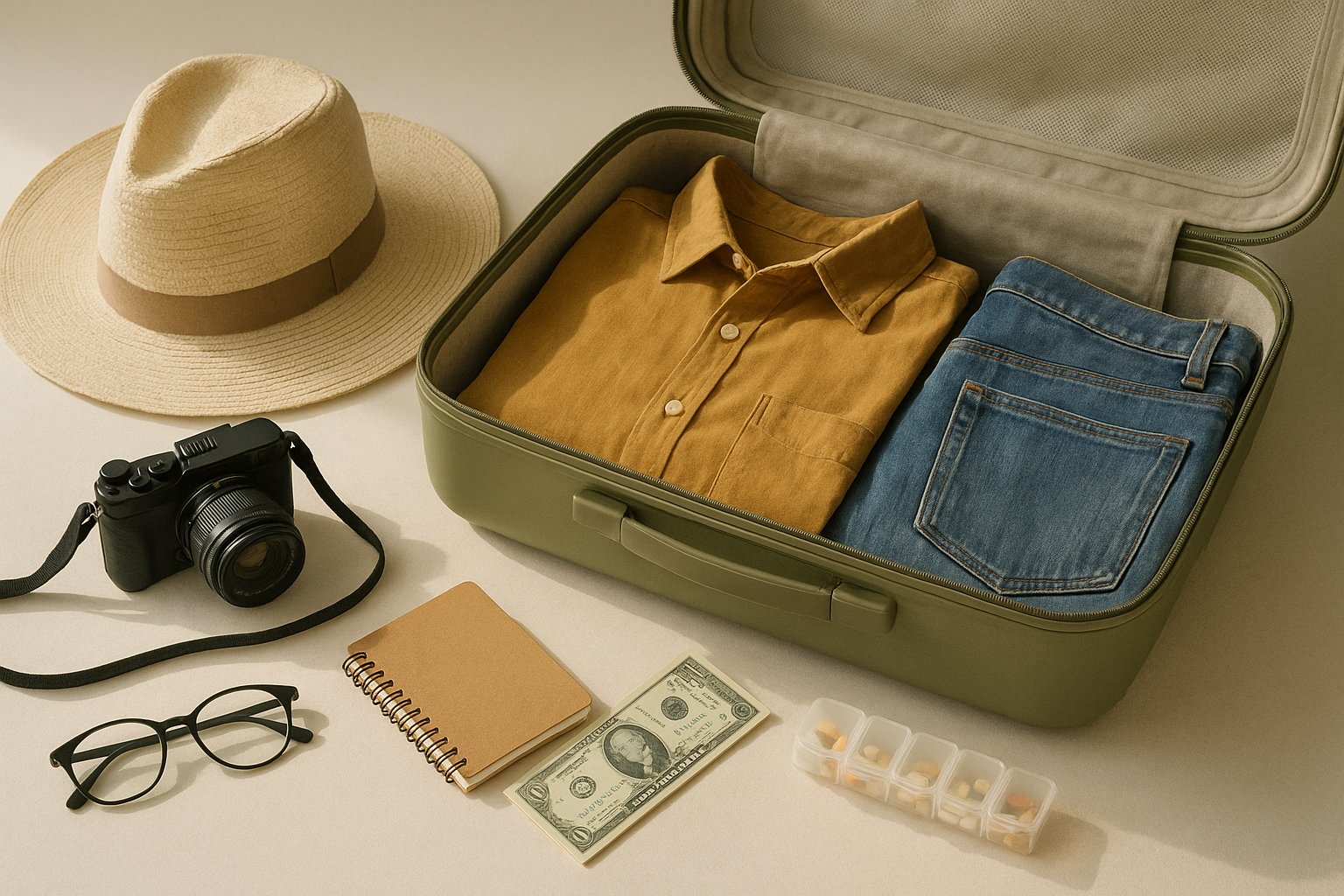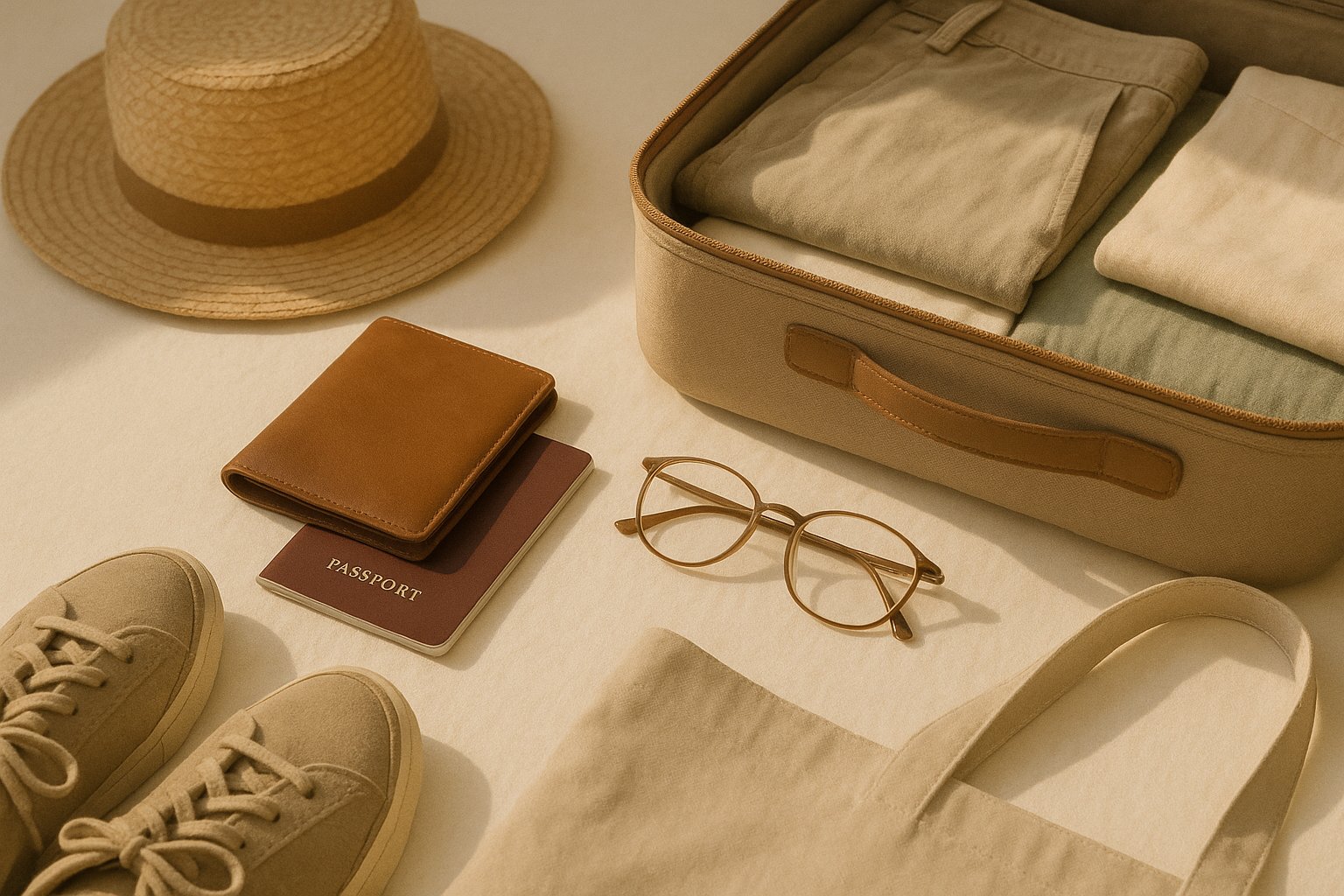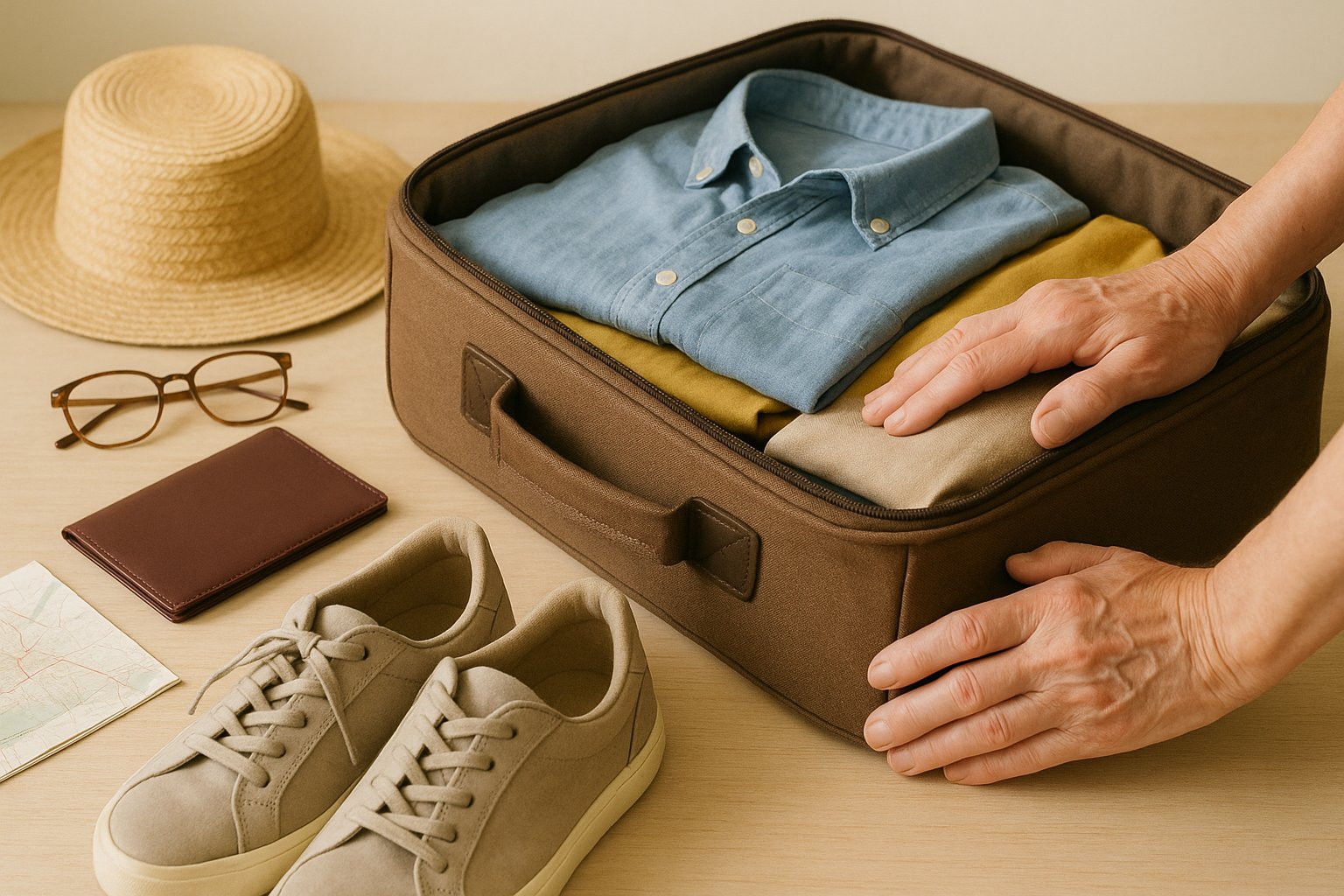7 Packing Tips for Retirees Traveling on a Budget

Retirement opens up incredible opportunities for travel, but managing luggage efficiently can make or break your budget-friendly adventure. Smart packing strategies help retirees avoid costly baggage fees, prevent overpacking expenses, and ensure comfortable journeys without breaking the bank. Whether you’re planning a weekend getaway or an extended international trip, these seven essential packing tips will help you travel lighter, smarter, and more affordably.
1. Invest in Lightweight, Versatile Luggage

Choosing the right luggage is the foundation of budget-conscious travel for retirees. Heavy suitcases eat into airline weight limits and can strain your back, potentially leading to medical expenses that derail your travel budget. A quality lightweight carry-on suitcase with spinner wheels makes navigating airports effortless while helping you avoid checked baggage fees that typically range from $30-$50 per bag each way.
Look for luggage made from durable polycarbonate or ballistic nylon that weighs under 7 pounds when empty. This gives you maximum packing capacity within airline weight restrictions. Consider a expandable carry-on bag that offers flexibility when you pick up souvenirs but still fits overhead compartments on your outbound journey.
Don’t overlook the value of a compression packing cube set. These organizational tools can reduce the volume of your clothing by up to 60%, allowing you to fit more into a smaller bag. They also keep your suitcase organized, making it easier to find items without unpacking everything at each destination.
2. Master the Capsule Wardrobe Approach
The capsule wardrobe concept is perfect for budget-minded retirees who want to pack light without sacrificing style. This strategy involves selecting 5-7 versatile clothing pieces in coordinating colors that can be mixed and matched to create multiple outfits. By limiting your wardrobe to essential, interchangeable items, you’ll pack less, travel lighter, and avoid excess baggage fees.
Choose neutral base colors like black, navy, gray, or khaki that pair easily with everything. Add one or two accent colors for variety. Select wrinkle-resistant travel clothing made from fabrics like merino wool, synthetic blends, or treated cotton that maintain their appearance without ironing.
For a week-long trip, pack:
- 3-4 tops that coordinate with all bottoms
- 2 pairs of pants or skirts
- 1 versatile jacket or cardigan
- 1 dressier outfit for special occasions
- Undergarments for 5-6 days (plan to do laundry mid-trip)
This approach not only saves luggage space but also reduces laundry costs during your travels. A portable travel clothesline and travel-size laundry detergent packets enable you to wash essentials in your hotel sink, extending your wardrobe without adding weight.
3. Maximize Your Personal Item Allowance
Airlines allow one carry-on bag plus one personal item at no extra charge, and savvy retirees can leverage this policy to pack significantly more without paying fees. Your personal item—typically a travel backpack, purse, or laptop bag—can hold substantial amounts if you choose wisely and pack strategically.
Select a personal item bag that maximizes the allowed dimensions (usually around 18" x 14" x 8"). A well-designed travel daypack with multiple compartments serves double duty as your airplane personal item and your daily sightseeing bag at your destination. Pack heavier items like shoes, toiletries, and electronics in this bag to keep your carry-on lighter and easier to lift into overhead bins.
Use every pocket efficiently. Store your travel document organizer with passports, tickets, and insurance information in an easily accessible outer pocket. Fill shoes with socks or small items to maximize space. Your personal item is also the perfect place for valuable items you want to keep close, like medications, jewelry, or camera equipment.
4. Embrace Multi-Purpose Travel Accessories
Budget-conscious retirees should prioritize items that serve multiple functions, reducing both the number of things you pack and your overall travel costs. Multi-purpose accessories eliminate redundancy and save precious luggage space while ensuring you’re prepared for various situations.
A microfiber travel towel weighs just ounces, dries quickly, and can serve as a beach towel, picnic blanket, or emergency wrap. Unlike bulky cotton towels, these compact alternatives take up minimal space and dry overnight. Similarly, a lightweight travel scarf provides warmth on chilly flights, serves as a blanket, covers shoulders in religious sites, and adds style to multiple outfits.

Invest in a universal travel adapter with USB ports that works in multiple countries rather than buying separate adapters for each destination. A portable power bank keeps your devices charged during long travel days without hunting for outlets. Choose one with at least 10,000mAh capacity to fully charge your smartphone 2-3 times.
Consider a collapsible water bottle that folds flat when empty, saving space while helping you avoid expensive airport and tourist-area beverage purchases. Staying hydrated is especially important for retirees, and refilling a reusable bottle can save $3-5 per day compared to buying bottled water.
5. Downsize Your Toiletries Strategically
Toiletries often consume disproportionate luggage space and weight, but retirees can dramatically reduce this burden with smart planning. The key is distinguishing between essentials you must bring and items available at your destination or provided by accommodations.
Transfer necessary products into TSA-approved travel bottles (3.4 ounces or less) rather than packing full-size containers. A complete silicone travel bottle set costs under $15 and lasts for years. For trips longer than a week, plan to purchase basics like shampoo and body wash at your destination—this is often cheaper than checking a bag to accommodate full-size bottles.
Solid alternatives save space and eliminate liquid restrictions. Shampoo bars, solid moisturizer bars, and toothpaste tablets work as effectively as their liquid counterparts but weigh less and won’t spill. A single shampoo bar can replace two or three bottles of liquid shampoo and lasts for dozens of washes.
Create a minimalist toiletry kit containing only true essentials. Most retirees can travel comfortably with: toothbrush and toothpaste, deodorant, face moisturizer with SPF, any prescription medications, and basic first-aid supplies. Many hotels provide soap, shampoo, and conditioner, so check your accommodation’s amenities before packing duplicates.
6. Wear Your Bulkiest Items During Travel
One of the simplest yet most effective packing strategies for budget-minded retirees is wearing your heaviest, bulkiest items during travel days. This approach maximizes luggage capacity for lighter items while keeping you comfortable during your journey.
Wear your heaviest shoes—typically comfortable walking shoes or boots—on the plane rather than packing them. Shoes consume significant suitcase space and add considerable weight. If you’re traveling to a cold destination, wear your packable down jacket or heaviest sweater during transit even if the weather at your departure point is warm.
Layer strategically on travel days. Wear your jeans or heaviest pants rather than packing them. Put on a cardigan or jacket that you can remove once aboard if the cabin is warm. This technique is particularly valuable when traveling with just a carry-on, as it effectively gives you several pounds of additional packing capacity.
Don’t forget about pockets. Travel pants with zip pockets and travel vests with multiple pockets allow you to distribute weight and carry essentials like your phone, wallet, and boarding pass without them taking up bag space. This is especially helpful during security screening when you need quick access to documents.
7. Plan for Laundry Instead of Overpacking
Many retirees overpack because they want a fresh outfit for each day, but planning to do laundry during your trip is a game-changing budget strategy. Washing clothes mid-trip allows you to pack half as much, avoid checked baggage fees, and maintain flexibility for extended travels.
For trips longer than five days, identify laundry options at your destination before you leave. Many accommodations offer guest laundry facilities, often for just a few dollars per load. Alternatively, local laundromats provide affordable wash-and-fold services that save you time. Some retirees enjoy the cultural experience of visiting neighborhood laundromats and meeting locals.
Pack a small travel laundry kit including a few laundry detergent sheets or pods, a sink stopper, and a portable clothesline. This enables you to hand-wash undergarments and lightweight items in your hotel room, extending your wardrobe indefinitely. Quick-dry fabrics can be washed in the evening and worn again the next day.
Calculate the savings: checking a bag costs $60-100 round-trip on most airlines, while doing one load of laundry during your trip costs $5-10. The math clearly favors packing less and planning for laundry. Plus, traveling with a lighter bag reduces physical strain and increases your mobility at airports and train stations.

Conclusion
Smart packing transforms the retirement travel experience, making budget-friendly adventures more accessible and enjoyable. By investing in the right lightweight luggage, embracing capsule wardrobes, maximizing your personal item allowance, choosing multi-purpose accessories, downsizing toiletries, wearing bulky items during transit, and planning for laundry, you’ll travel lighter and save hundreds of dollars in baggage fees and unnecessary purchases.
These seven packing strategies aren’t just about fitting everything into a smaller bag—they’re about traveling with greater freedom, flexibility, and financial peace of mind. When you’re not worried about managing heavy luggage or paying unexpected fees, you can focus on what retirement travel should be: exploring new destinations, creating memories, and enjoying the journey. Start implementing these tips on your next trip, and you’ll wonder why you ever traveled any other way.
